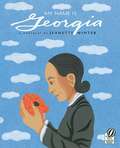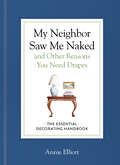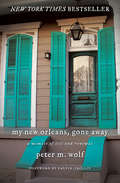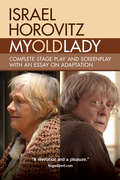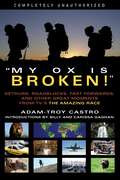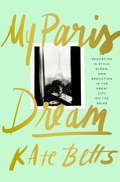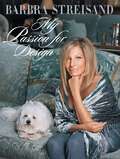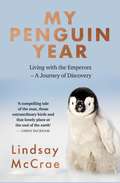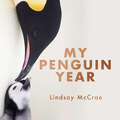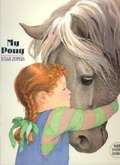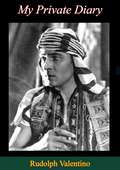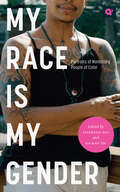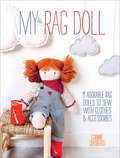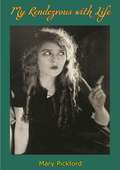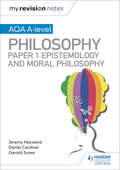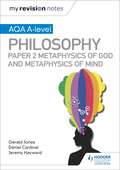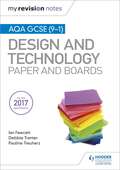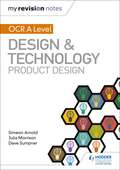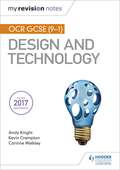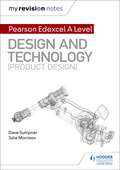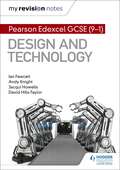- Table View
- List View
My Name Is Georgia
by Jeanette WinterFrom the time she was a young girl, Georgia O'Keeffe saw the world in her own way. At night she climbed a ladder to the starlit sky to await the sun. She walked in the hills at daybreak and in moonlight. She gathered bones and rocks, and brought them home to paint. And she always knew what was in her heart--to be an artist.
My Neighbor Saw Me Naked and Other Reasons You Need Drapes: The Essential Decorating Handbook
by Annie ElliottA quirky design book that cuts to the chase—teaching you everything you need to know, and absolutely nothing you don&’t—from a beloved interior designer and TikTok sensation. Should my drapes have a pinch pleat or a rod pocket? What rug material will stand up best to my pets and children? How tall should my side tables be? Where should I put the TV?! There are so many decisions that go into designing a home—and the choices can be overwhelming. Sometimes, you just want to be told what to do. Designer Annie Elliott is here to do just that: offer simple, direct answers to your every design quandary. As she says in her introduction: &“While there exist dozens—nay, hundreds!—of gorgeous coffee table books, there is no book that gives it to you straight. No book that provides only the most important things you need to know as you feather your nest. (By which I mean, those things that result in the biggest and most costly mistakes if you get them wrong, and the most tasteful interiors if you get them right.)&” That is, until now. In her twenty-plus years running an interior design business in Washington, DC, Annie has collected dozens of best practices when it comes to decorating, and now she&’s compiled them all into the perfect pocket manual. With chapters on everything from window treatments to accessories, plus a &“cheat sheet&” of helpful dimensions, readers will be armed with all of the expert intel they need to turn their house into a stylish, functional home.
My New Orleans, Gone Away: A Memoir of Loss and Renewal
by Peter M. WolfIn the wake of Katrina's devastation, a Jewish man looks back on his secular NOLA childhood.
My Old Lady: Complete Stage Play and Screenplay with an Essay on Adaptation
by Israel HorovitzFamed playwright Israel Horovitz has written more than 70 produced plays, which have been translated in more than 30 languages worldwide. Along the way, he has also written screenplays for film including Author! Author!, starring Al Pacino, as well as the award-winning Sunshine, James Dean, and The Strawberry Statement. At the age of 75, he directed an adaptation of his play My Old Lady, starring Kevin Kline, Maggie Smith, and Kristin Scott Thomas. Now he shares tips and techniques on adapting plays for the screen.The book includes the full script of both the play version and screenplay of My Old Lady, along with an in-depth analysis by Horovitz of the challenges of adapting the written language of a play to the visual language of the screen. He discusses what inspired him to consider adapting the play in the first place, and his diligent efforts to distill the spoken language of the play into the visual language of film. In discussing his adaptation process, Horovitz also reveals his brilliant insights into the creative process itself, as well as how to keep inspired during the course of a lengthy writing career.
My Ox Is Broken!: Roadblocks, Detours, Fast Forwards and Other Great Moments from Tv's 'the Amazing Race'
by Adam-Troy CastroThe Amazing Race is a reality show like no other and it has the best set around. Best-selling novelist, Adam-Troy Castro, explores The Amazing Race in My Ox is Broken! one of the first books ever published about one of the best reality television programs around. From Thailand to Greenland, this show has consistently gone where no other show has gone before, and Castro continues the excitement of the Race in a book that is funny, entertaining, and unique—just like the show itself. The Amazing Race has hooked viewers for all the right reasons and it doesn't show any signs of stopping. My Ox is Broken! is the best reading companion for any fan of this hit show or for any fan of reality television at its best.
My Paris Dream: An Education in Style, Slang, and Seduction in the Great City on the Seine
by Kate BettsA charming and insightful memoir about coming of age as a fashion journalist in 1980s Paris, by former Vogue and Harper's Bazaar editor Kate Betts, the author of Everyday Icon: Michelle Obama and the Power of Style"You can always come back," my mother said. "Just go." As a young woman, Kate Betts nursed a dream of striking out on her own in a faraway place and becoming a glamorous foreign correspondent. After college--and not without trepidation--she took off for Paris, renting a room in the apartment of a young BCBG (bon chic, bon genre) family and throwing herself into the local culture. She was determined to master French slang, style, and savoir faire, and to find a job that would give her a reason to stay.After a series of dues-paying jobs that seemed only to reinforce her outsider status, Kate's hard work and willingness to take on any assignment paid off: Her writing and intrepid forays into la France Profonde--true France--caught the eye of John Fairchild, the mercurial fashion arbiter and publisher of Women's Wear Daily, the industry's bible. Kate's earliest assignments--investigating the mineral water preferred by high society, chasing after a costumed band of wild boar hunters through the forests of Brittany--were a rough apprenticeship, but she was rewarded for her efforts and was initiated into the elite ranks of Mr. Fairchild's trusted few who sat beside him in the front row and at private previews in the ateliers of the gods of French fashion. From a woozy yet mesmerizing Yves Saint Laurent and the mischievous and commanding Karl Lagerfeld to the riotous, brilliant young guns who were rewriting all the rules--Martin Margiela, Helmut Lang, John Galliano--Betts gives us a view of what it was like to be an American girl, learning about herself, falling in love, and finding her tribe.Kate Betts's captivating memoir brings to life the enchantment of France--from the nightclubs of 1980s Paris where she learned to dance Le Rock, to the lavender fields of Provence and the grand spectacle of the Cour Carrée--and magically re-creates that moment in life when a young woman discovers who she's meant to be. Praise for My Paris Dream "[Betts] shares her coming-of-age in a self-assured book that should be given to every college senior with a Doisneau poster (or Chanel ad) on her wall. . . . Those of us who've been there and back will find it entertaining and sneakily poignant reading on the flight to Charles de Gaulle."--The New York Times Book Review "Even if your summer travel plans don't include a stroll on the Champs Élysées, you'll always have My Paris Dream. . . . As light and refreshing as an ice cream cone from the legendary Berthillon, My Paris Dream evokes the sights, sounds, smells and styles of 1980s Paris."--USA Today"An amazing story of a young woman in Paris trying to break into the fashion business as a journalist, My Paris Dream is a fun read. Kate Betts's trajectory of inventing herself is uniquely her own but incredibly universal as well."--Sophia Amoruso, author of #GIRLBOSS "Kate Betts's story brought me back to my own young self and the journey I made--in my case, from a small town in Illinois to New York City. She's captured that youthful fearlessness and the romantic impulse we have to strike out and find ourselves."--Cindy CrawfordFrom the Hardcover edition.
My Passion for Design
by Barbra StreisandFor nearly five decades Barbra Streisand has been one of the singular figures in American entertainment. From the cabaret to the Broadway stage, from television and film stardom to her acclaimed work as a director, from the recording studio to the concert hall, she has demonstrated that the extraordinary voice that launched her career was only one of her remarkable gifts. Now, in her first book, Barbra Streisand reveals another aspect of her talent: the taste and style that have inspired her beautiful homes and collections. My Passion for Design focuses on the architecture and construction of her newest homes, the dream refuge that she has longed for since the days when she shared a small Brooklyn apartment with her mother, brother, and grandparents. A culmination and reflection of Streisand's love of American architecture and design between the eighteenth and twentieth centuries, the book contains many of her own photographs of the rooms she has decorated, the furniture and art she has collected, and the ravishing gardens she has planted on her land on the California coast. In addition to glimpses of her homes, Barbra shares memories of her childhood, the development of her sense of style, and what collecting has come to mean to her. My Passion for Design is a rare and intimate private tour into the world of one of our most beloved stars. It will be welcomed by her many fans and all lovers of the great achievements of American design.
My Penguin Year: Living with the Emperors - A Journey of Discovery
by Lindsay McCrae'Twelve men have walked on the moon. But how many have spent an entire season with the Emperors in Antarctica? Maybe more, likely less. Lindsay McCrae has - and this is his wonderful and frank story.' - Chris PackhamWhen the BBC asked BAFTA-winning cameraman Lindsay McCrae to go to Antarctica to film emperor penguins he was thrilled. After discussing it with his wife Becky they agreed that, although it would mean him being away for 11 months, he should do it. But then she became pregnant and it seemed like the worst idea in the world - not just to miss the birth of his first child, but the first 7 months of his life. Weeks of anguished discussions followed before they decided he should go because it was his dream project and the chance might never come again.My Penguin Year recounts Lindsay's adventure to the end of the Earth, filming the most resilient creatures in nature, while coping with being over 15,000km away from Becky and all the comforts of home - something which almost proved too much. Out of that experience he has written an unprecedented portrait of Antarctica's most extraordinary residents, the emperor penguins. They march up to 100 miles over solid ice to reach their breeding grounds. They choose to breed in the depths of the worst winter on the planet; and in an unusual role reversal, the males incubate the eggs, fasting for over 100 days to ensure they introduce their chicks safely into their new frozen world. And they are uniquely vulnerable to the unprecedented melting of the polar ice cap.In weaving their story with his epic journey, Lindsay has created a masterpiece of natural observation - and a deeply moving tale of human endeavour in the harshest environment on the planet.
My Penguin Year: Living with the Emperors - A Journey of Discovery
by Lindsay McCraeEmperor penguins have the most extraordinary lifecycle. They march up to 100 miles over solid ice to reach their breeding grounds. They choose to breed in the depths of the worst winter on the planet; and in an unusual role reversal, the males incubate the eggs, fasting for over 100 days to ensure they introduce their chicks safely into their new frozen world.My Penguin Year recounts author Lindsay McCrae's adventure to the end of the Earth, spending a year living alongside the most resilient creatures in nature. He experienced every aspect of a breeding emperor's life, facing the inevitable sacrifices that came with living his childhood dream, and facing down the personal obstacles that, being over 15,000km away from the comforts of home, almost proved too much.(P) 2019 Hodder & Stoughton Ltd
My Pony
by Susan JeffersA little girl who longs for a pony draws pictures of a dappled mare she names Silver, then rides her through a magical countryside in her dreams. At the heart of Susan Jeffers's exquisite picture book lies the idea that in her imagination, a child can journey anywhere and do anything--even fly through the stars on her very own pony...
My Private Diary
by Rudolph ValentinoOriginally published in 1929, this book details the famous silent actor and sex symbol Rudolph Valentino and his lover Natacha Rambova's travels back to Europe in 1923. Valentino kept a diary at this time, into which he faithfully recorded his thoughts whilst living the American dream, proving his naysayers back home in Italy wrong: "My Dream is coming true! From day to day, night to night, here and there, I am going to write down my impressions. I am going to put down on paper the things I think, the things I do, the people I meet, all of the sensations, pleasurable and profitable that are mine. I shall never go home, I said to myself, until I can go home somebody..."
My Race Is My Gender: Portraits of Nonbinary People of Color (Q+ Public)
by S. L. Clark Stephanie Hsu Ka-Man Tse Jonas St. Juste Ignacio G. Rivera Ari SolomonGenderqueer and nonbinary people of color often experience increased marginalization, belonging to an ethnic group that seldom recognizes their gender identity and a queer community that subscribes to white norms. Yet for this very reason, they have a lot to teach about how racial, sexual, and gender identities intersect. Their experiences of challenging social boundaries demonstrate how queer communities can become more inclusive and how the recognition of nonbinary genders can be an anti-racist practice. My Race is My Gender is the first anthology by nonbinary writers of color to include photography and visual portraits, centering their everyday experiences of negotiating intersectional identities. While informed by queer theory and critical race theory, the authors share their personal stories in accessible language. Bringing together Black, Indigenous, Latine, and Asian perspectives, its six contributors present an intergenerational look at what it means to belong to marginalized queer communities in the U.S. and feel solidarity with a global majority at the same time. They also provide useful insights into how genderqueer and nonbinary activism can both energize and be fueled by such racial justice movements as Black Lives Matter.
My Rag Doll: 11 Adorable Rag Dolls to Sew with Clothes & Accessories
by Corinne CrasbercuSew super cute rag dolls and their gorgeous clothes to make the perfect present for little girls. There's one basic doll sewing pattern which you can then alter to personalize your doll's hair and eye color and hair style! Then choose from a range of fabulous different themed outfits and accessories to complete your uniquely charming doll--including a ballerina doll, a bedtime doll and a fairy doll! All instructions are suitable for intermediate to experienced sewers and include full-sized templates for the doll, clothes and accessories.Corinne Crasbercu is a dressmaking specialist with a background in ready-to-wear and haute couture fashion design, she now designs for Marie Claire magazine.
My Rendezvous with Life
by Mary PickfordFirst published in 1935, this book by famous film actress Mary Pickford is an essay on death and her belief in an afterlife and the undying human spirit.“When we stop to consider that all of life, as we understand it, springs from a little seed, then a progression of life beyond this present experience should not seem such a miraculous thing.“The development of a Sequoia tree growing two hundred and fifty feet into the air and living five thousand years is, to me, more amazing than the transition we call death.“And so why do we humans in this world think of our progression out of it as such a great mystery when the wise ones through the ages have assured us that the only part of us that really can be destroyed is our false and limited conception of life?”—Mary Pickford
My Revision Notes: AQA A Level Design and Technology: Product Design
by Julia Morrison Dave SumpnerExam board: AQALevel: A-levelSubject: Design and TechnologyFirst teaching: September 2017First exams: Summer 2019Target success in AQA A Level Design and Technology (Product Design) with this proven formula for effective, structured revision. Key content coverage is combined with exam-style tasks and practical tips to create a revision guide that students can rely on to review, strengthen and test their knowledge.With My Revision Notes, every student can:- plan and manage a successful revision programme using the topic-by-topic planner- consolidate subject knowledge by working through clear and focused content coverage- test understanding and identify areas for improvement with regular 'Now Test Yourself' tasks and answers- improve exam technique through practice questions, expert tips and examples of typical mistakes to avoid- get exam ready with extra quick quizzes and answers to the practice questions available online.
My Revision Notes: AQA A-level Philosophy Paper 1 Epistemology and Moral Philosophy (My Revision Notes)
by Dan Cardinal Jeremy Hayward Gerald JonesTarget success in AQA A-level Philosophy with this proven formula for effective, structured revision; key content coverage is combined with exam-style tasks and practical tips to create a revision guide that you can rely on to review, strengthen and test students' knowledge.With My Revision Notes, every student can:- Plan and manage a successful revision programme using the topic-by-topic planner- Consolidate subject knowledge by working through clear and focused content coverage- Test understanding and identify areas for improvement with regular 'Now Test Yourself' tasks and answers- Improve exam technique through practice questions, expert tips and examples of typical mistakes to avoid
My Revision Notes: AQA A-level Philosophy Paper 2 Metaphysics of God and Metaphysics of mind (My Revision Notes)
by Dan Cardinal Jeremy Hayward Gerald JonesTarget success in AQA A-level Philosophy with this proven formula for effective, structured revision; key content coverage is combined with exam-style tasks and practical tips to create a revision guide that you can rely on to review, strengthen and test students' knowledge.With My Revision Notes, every student can:- Plan and manage a successful revision programme using the topic-by-topic planner- Consolidate subject knowledge by working through clear and focused content coverage- Test understanding and identify areas for improvement with regular 'Now Test Yourself' tasks and answers- Improve exam technique through practice questions, expert tips and examples of typical mistakes to avoid
My Revision Notes: AQA GCSE (My Revision Notes)
by Ian Fawcett Pauline Treuherz Debbie TranterExam board: AQALevel: GCSESubject: Design and TechnologyFirst teaching: September 2017First exams: Summer 2019Target success in AQA GCSE (9-1) Design and Technology with this proven formula for effective, structured revision. Key content coverage is combined with exam-style tasks and practical tips to create a revision guide that students can rely on to review, strengthen and test their knowledge.This revision guide is for you if you have chosen to study textile-based materials in greater depth.With My Revision Notes, every student can:- plan and manage a successful revision programme using the topic-by-topic planner- consolidate subject knowledge by working through clear and focused content coverage- test understanding and identify areas for improvement with regular 'Now Test Yourself' tasks and answers- improve exam technique through practice questions, expert tips and examples of typical mistakes to avoid- get exam ready with extra quick quizzes and answers to the practice questions available online
My Revision Notes: AQA GCSE (My Revision Notes)
by Ian Fawcett Pauline Treuherz Debbie TranterExam board: AQALevel: GCSESubject: Design and TechnologyFirst teaching: September 2017First exams: Summer 2019Target success in AQA GCSE (9-1) Design and Technology with this proven formula for effective, structured revision. Key content coverage is combined with exam-style tasks and practical tips to create a revision guide that students can rely on to review, strengthen and test their knowledge.This revision guide is for you if you have chosen to study papers and boards in greater depth.With My Revision Notes, every student can:- plan and manage a successful revision programme using the topic-by-topic planner- consolidate subject knowledge by working through clear and focused content coverage- test understanding and identify areas for improvement with regular 'Now Test Yourself' tasks and answers- improve exam technique through practice questions, expert tips and examples of typical mistakes to avoid- get exam ready with extra quick quizzes and answers to the practice questions available online.
My Revision Notes: OCR AS/A Level Design and Technology: Product Design
by Julia Morrison Dave Sumpner Simeon ArnoldTarget success in OCR A-level Design and Technology: Product Design with this proven formula for effective, structured revision; key content coverage is combined with exam-style tasks and practical tips to create a revision guide that students can rely on to review, strengthen and test their knowledge.With My Revision Notes every student can:- Plan and manage a successful revision programme using the topic-by-topic planner- Consolidate subject knowledge by working through clear and focused content coverage- Test understanding and identify areas for improvement with regular 'Now Test Yourself' tasks and answers- Improve exam technique through practice questions, expert tips and examples of typical mistakes to avoid
My Revision Notes: OCR GCSE (9-1) Design and Technology
by Andy Knight Kevin Crampton Corinne WalkleyExam board: OCRLevel: GCSESubject: Design and TechnologyFirst teaching: September 2017First exams: Summer 2019Target success in OCR GCSE (9-1) Design and Technology with this proven formula for effective, structured revision. Key content coverage is combined with exam-style tasks and practical tips to create a revision guide that students can rely on to review, strengthen and test their knowledge.With My Revision Notes, every student can:- plan and manage a successful revision programme using the topic-by-topic planner- consolidate subject knowledge by working through clear and focused content coverage- test understanding and identify areas for improvement with regular 'Now Test Yourself' tasks and answers- improve exam technique through practice questions, expert tips and examples of typical mistakes to avoid- get exam ready with extra quick quizzes and answers to the practice questions available online.
My Revision Notes: Pearson Edexcel A Level Design and Technology (Product Design)
by Julia Morrison Dave SumpnerExam board: Edexcel Level: A-levelSubject: Design and TechnologyFirst teaching: September 2017First exams: Summer 2019Target success in Edexcel A-level Design and Technology (Product Design) with our proven formula for effective, structured revision. Key content coverage is combined with exam-style tasks and practical tips to create a revision guide that students can rely on to review, strengthen and test their knowledge.With My Revision Notes, every student can:- plan and manage a successful revision programme using the topic-by-topic planner- consolidate subject knowledge by working through clear and focused content coverage- test understanding and identify areas for improvement with regular 'Now Test Yourself' tasks and answers- improve exam technique, including interpretation and application, through practice questions, sample answers and exam tips.
My Revision Notes: Pearson Edexcel A Level Design and Technology (Product Design)
by Julia Morrison Dave SumpnerExam board: Edexcel Level: A-levelSubject: Design and TechnologyFirst teaching: September 2017First exams: Summer 2019Target success in Edexcel A-level Design and Technology (Product Design) with our proven formula for effective, structured revision. Key content coverage is combined with exam-style tasks and practical tips to create a revision guide that students can rely on to review, strengthen and test their knowledge.With My Revision Notes, every student can:- plan and manage a successful revision programme using the topic-by-topic planner- consolidate subject knowledge by working through clear and focused content coverage- test understanding and identify areas for improvement with regular 'Now Test Yourself' tasks and answers- improve exam technique, including interpretation and application, through practice questions, sample answers and exam tips.
My Revision Notes: Pearson Edexcel GCSE (9-1) Design and Technology
by Ian Fawcett Andy Knight David Hills-Taylor Jacqui HowellsExam board: Pearson EdexcelLevel: GCSESubject: Design and TechnologyFirst teaching: September 2017First exams: Summer 2019Target success in Pearson Edexcel GCSE (9-1) Design and Technology with this proven formula for effective, structured revision. Key content coverage is combined with exam-style tasks and practical tips to create a revision guide that you can rely on to review, strengthen and test your knowledge.With My Revision Notes you can:- Plan and manage a successful revision programme using the topic-by-topic planner- Consolidate subject knowledge by working through clear and focused content coverage- Test understanding and identify areas for improvement with regular 'Now Test Yourself' tasks and answers- Improve exam technique through practice questions, expert tips and examples of typical mistakes to avoid- Get exam ready with extra quick quizzes and answers to the practice questions available online.
My Revision Notes: Pearson Edexcel GCSE (9-1) Design and Technology
by Ian Fawcett Andy Knight David Hills-Taylor Jacqui HowellsExam board: Pearson EdexcelLevel: GCSESubject: Design and TechnologyFirst teaching: September 2017First exams: Summer 2019Target success in Pearson Edexcel GCSE (9-1) Design and Technology with this proven formula for effective, structured revision. Key content coverage is combined with exam-style tasks and practical tips to create a revision guide that you can rely on to review, strengthen and test your knowledge.With My Revision Notes you can:- Plan and manage a successful revision programme using the topic-by-topic planner- Consolidate subject knowledge by working through clear and focused content coverage- Test understanding and identify areas for improvement with regular 'Now Test Yourself' tasks and answers- Improve exam technique through practice questions, expert tips and examples of typical mistakes to avoid- Get exam ready with extra quick quizzes and answers to the practice questions available online.
